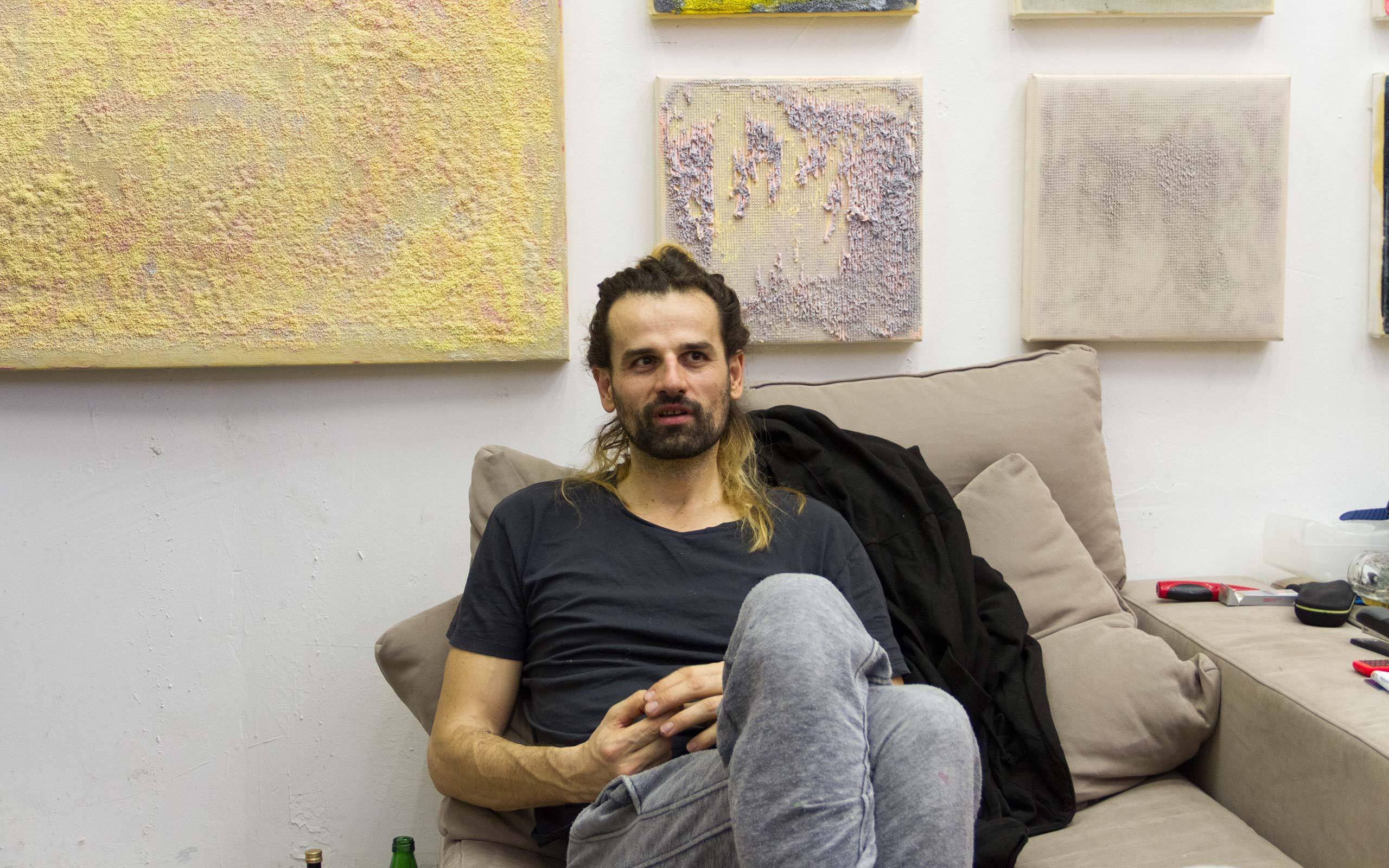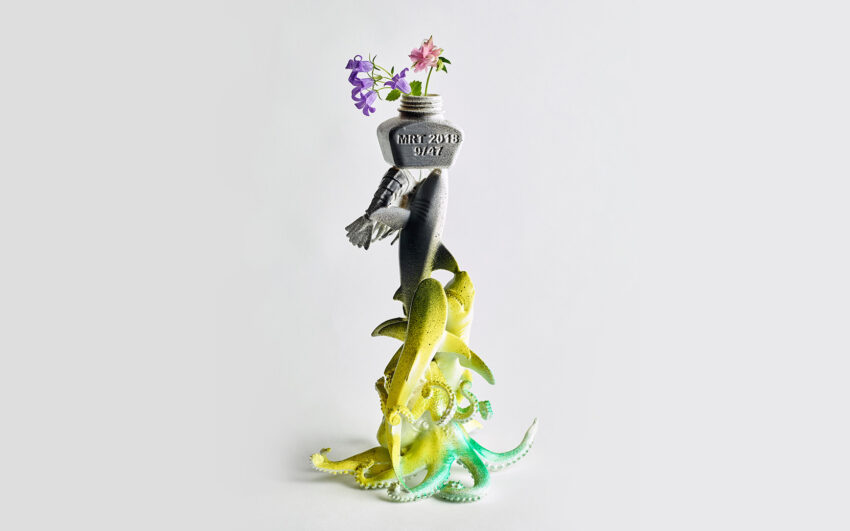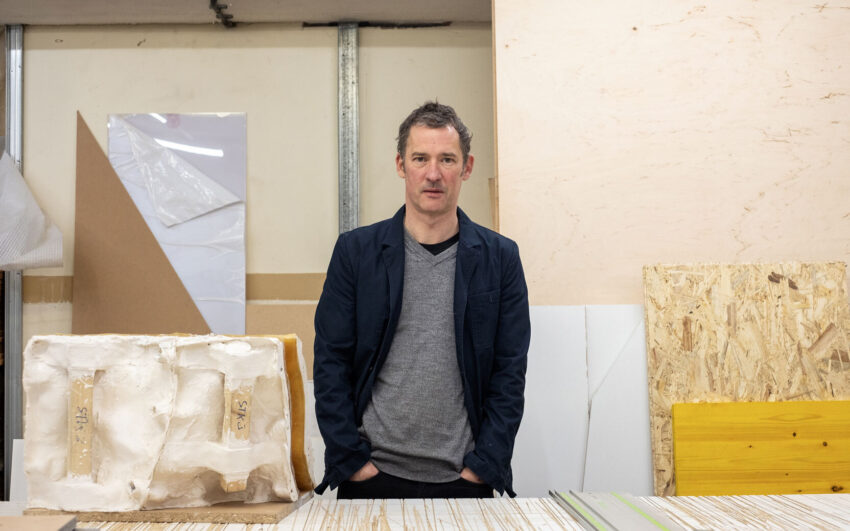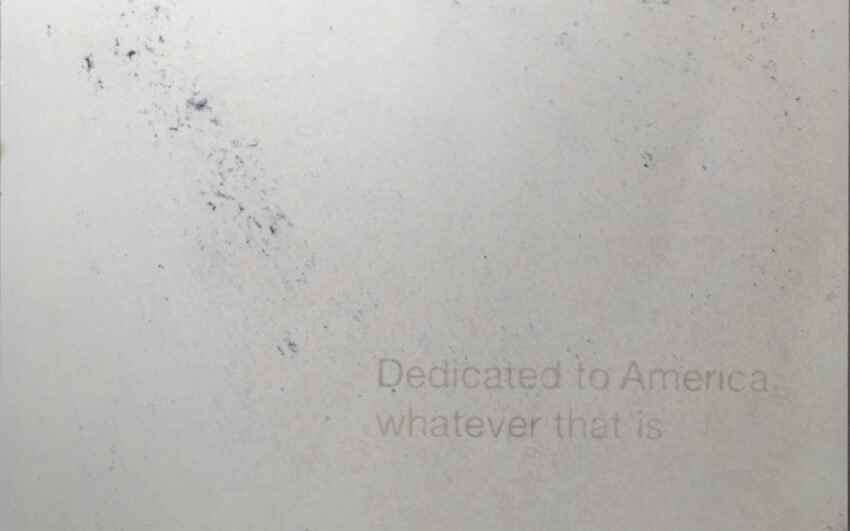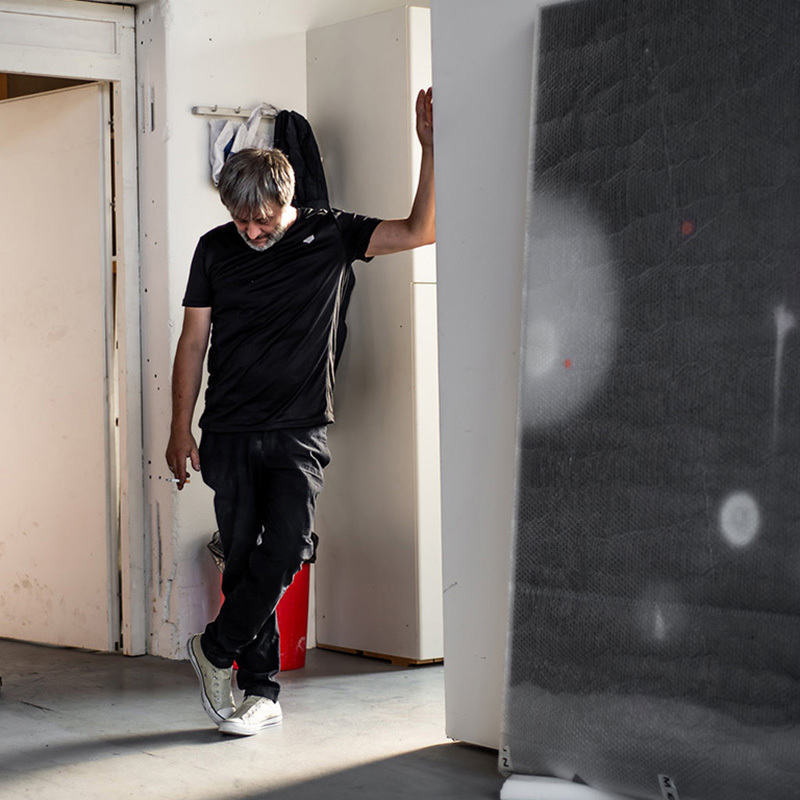Occasionally, the mysterious structures found on Dejan Dukic’s canvases are reminiscent of barren landscapes seen from a bird’s eye view or of proliferating lichen on rock surfaces. His paintings always look evolved rather than made and they captivate by their rich depth of color.
Dejan, what a spectacular studio, directly under the arches of the metropolitan railway! Surely these studio spaces are very sought-after. How did you get it?
By a happy coincidence! I had looked for something like it: It had to be four meters high and spacious. I had only 300 Euro to spend on rent, but I could find nothing! Two weeks later a friend sent me here, because reportedly there was a screen-printing shop where one could print cost-effectively. It turned out that the previous tenant had not paid his rent for three months. I said, “Hey, just give me the key, I will pay the rent and if you want to come back, come back.” That was eight years ago. Since then, I have begun to rent the adjacent space, where I can work on my large paintings.
Your work process is quite extraordinary and involves forcing oil paint through the canvas from the reverse side of the canvas. The material actually seems to grow out of the painting support forming fascinating structures, which sometimes are reminiscent of moss carpets, mold, or sponges. How does one arrive at this work procedure?
It began in an artist residency in Beijing. The air there was so dirty that I had to breathe through the canvas in order to paint. And because I love the classical working with oil and canvas I asked myself how I can combine this discovery with it. I started to reverse the procedure of painting by pressing the paint through the canvas from the reverse side. For this I don’t need brushes, I need only Latex gloves. This way I have direct contact with both canvas and paint. I rather massage my paintings. I like this notion.
Does that mean that you stand behind the canvas and don’t see what kind of picture emerges on the front side of the canvas?
I like to give up some of the control. The paintings need about six months to dry. During this time, they gradually change with no intervention from me. It would actually be nice if the pictures would paint themselves. (laughs) I would like to invent such a process.
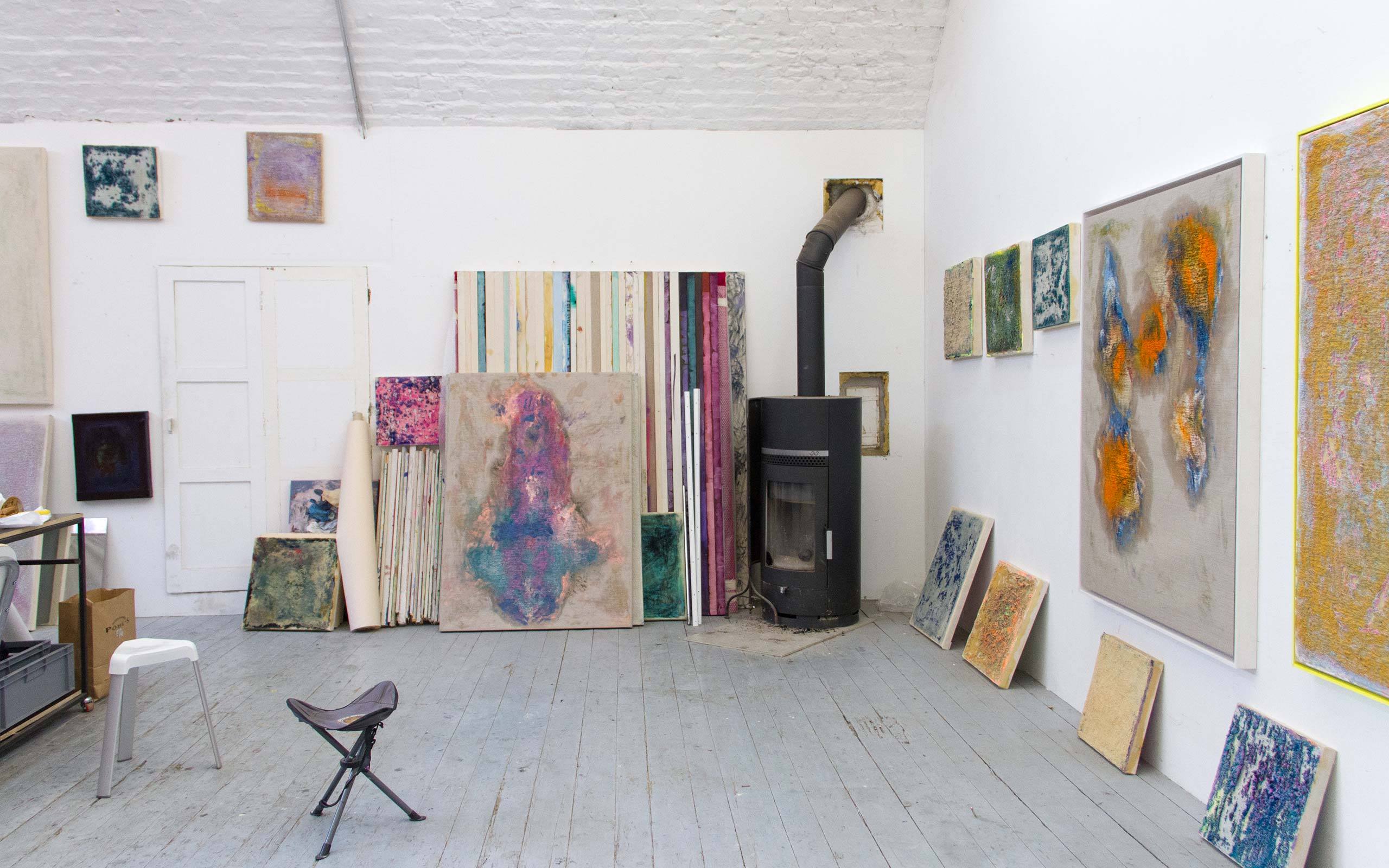
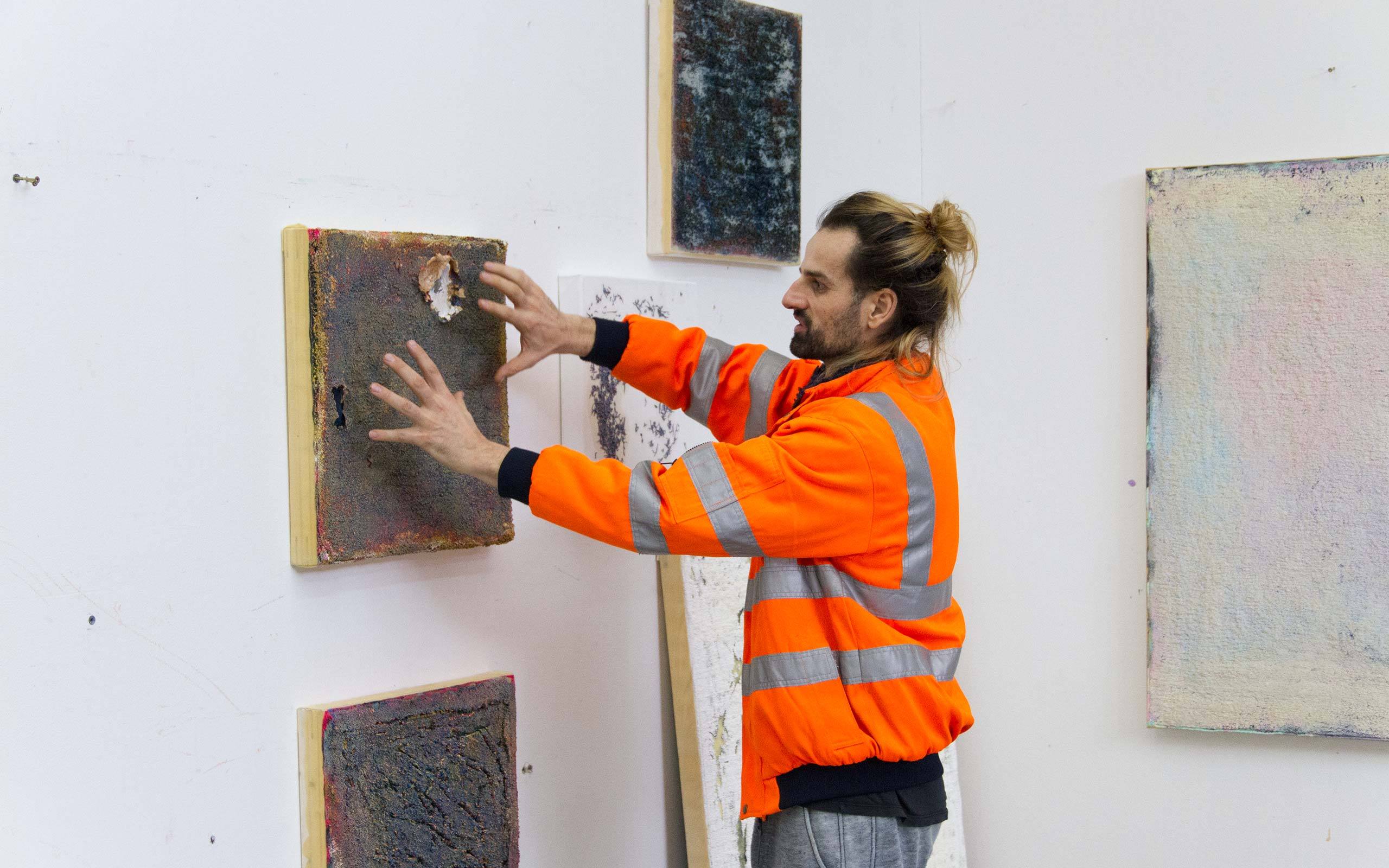
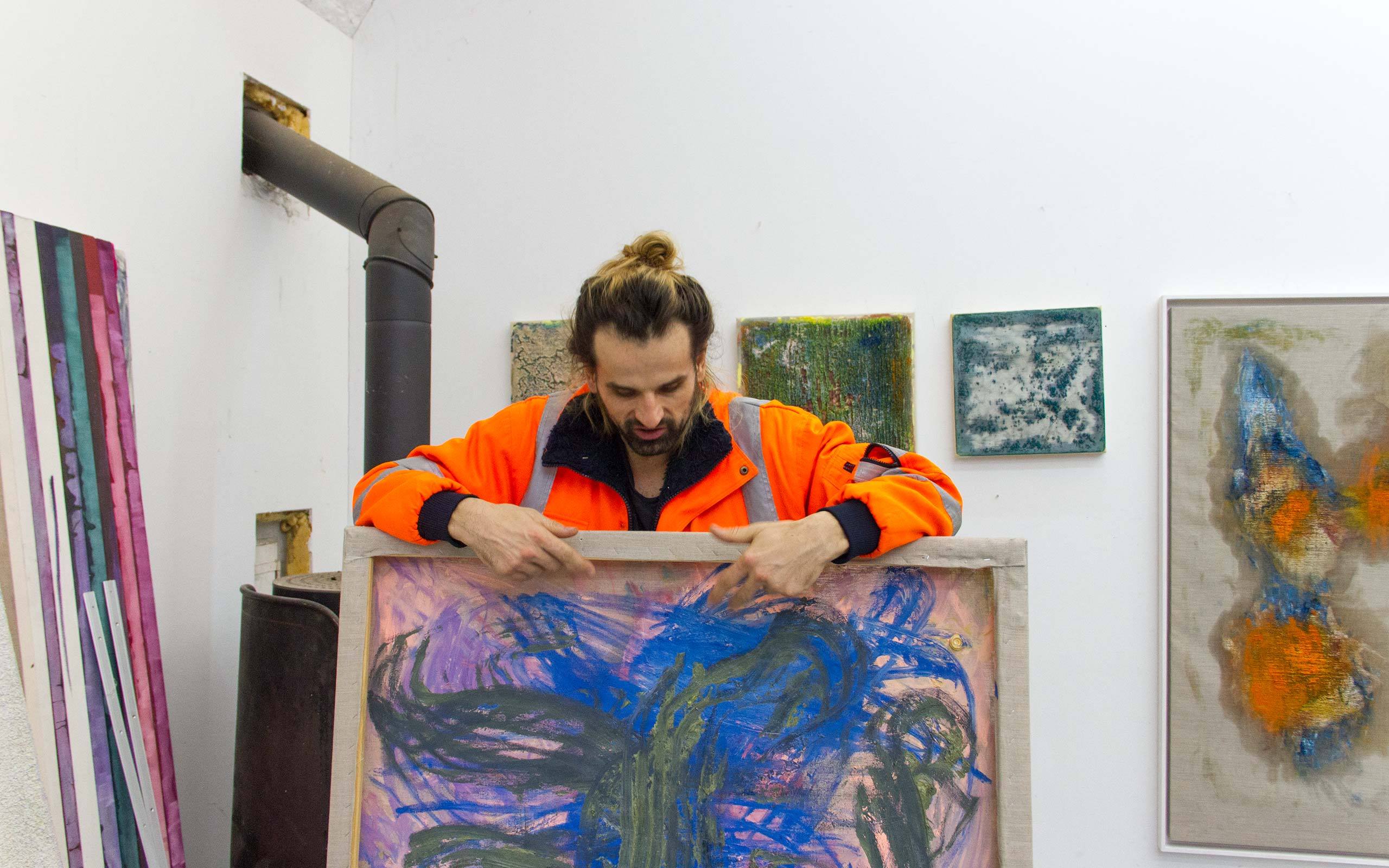
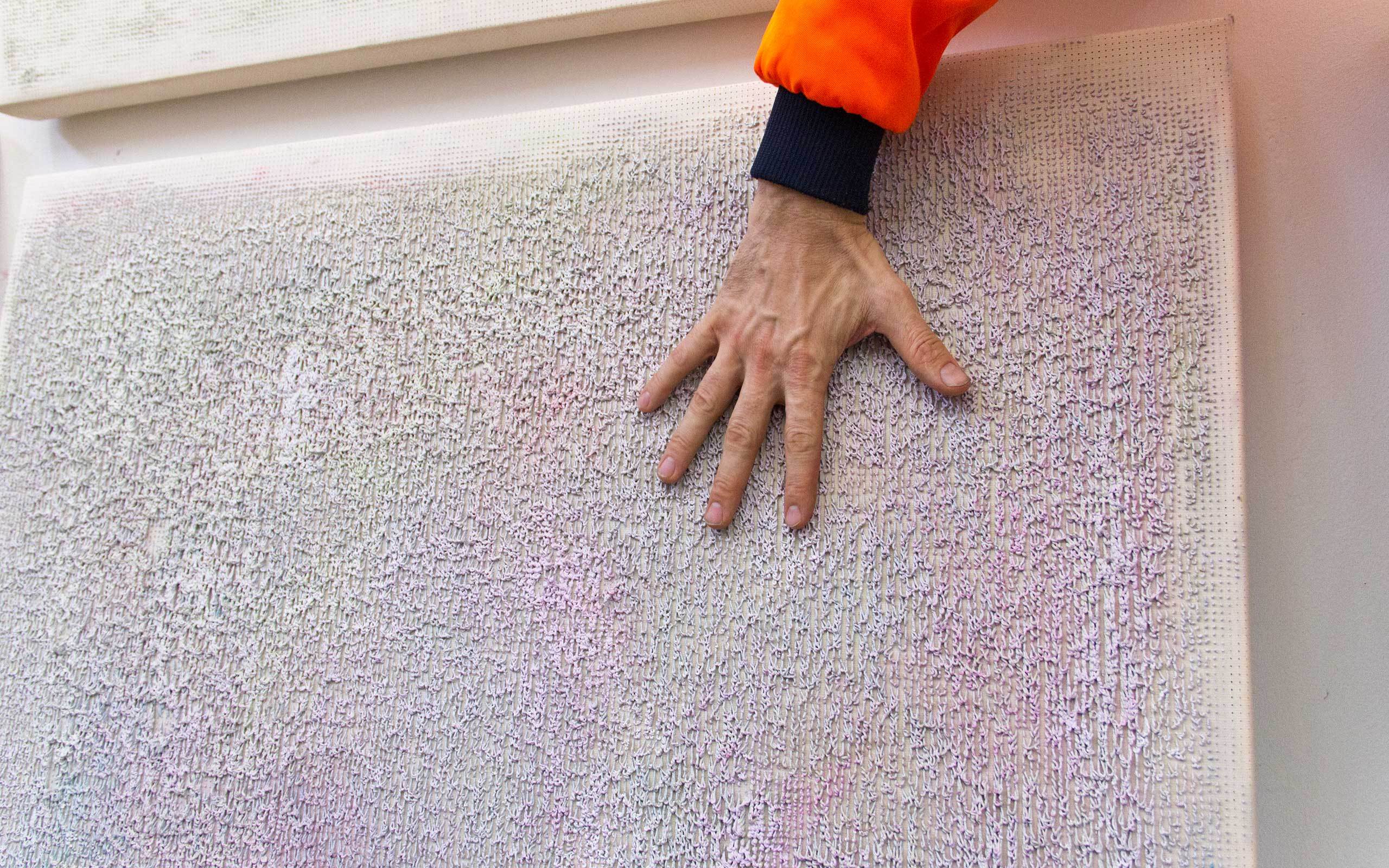
Do you build the canvases yourself?
Yes, all built by myself. In 2012, when I completed my diploma, a series of works emerged in the form of a certain theme: the Storage Paintings. I had a lot of incomplete works from my time as a student. I cut off the sides from these canvases and presented the edges together as they would appear if they were being stored. This way I could conclude this stage of life and at the same time I arrived at a new picture result. The fact of my continuous experimentation with new things means that I can only exhibit about twenty percent of the pictures that I produce. With the Storage Paintings I was able to transform “rejects” into new material and at the same time capture memories.
Only twenty percent? How do you decide which painting is to be exhibited?
That is an intuitive decision. Perhaps what makes sense crystallizes during the time in the studio spent with the paintings. Sometimes I exert myself and spend a great deal of energy working on a painting, yet despite that effort it fails to turn out how I wished. But when I look at the work some time later, I think, “Wow, that is really good!” For the decision it is helpful to keep a certain distance. When I look back on my work, I often discover parallels in a group of works. Then it is interesting to observe where my work has drawn me. When one begins to repeat something, because one is in search of a certain thing... perhaps art begins exactly there.
The impact of your works is constantly changing between the microscopic and the macroscopic. In one moment one discovers minute cells and in another a satellite picture.
The dissolution of my works results from the perforation of the canvas. As a rule it is so dense that from the distance one sees a monochrome painting and for the most part nothing figurative. But when you come closer you suddenly discover what is happening in this micro-macro cosmos. It is the change that is so exciting in the technique.
Color does play a big role in your work in general. Can you explain your approach to it?
My approach is naïve. I want to play and eventually I play so long with the paint until my intuition tells me, “Now it’s okay.” While I’m working I trust my own nature and my intuition. I am happy that I can let my body work with self-confidence. I could call this my strength. Accidents and coincidences are very important in this process; otherwise one would never try something new.
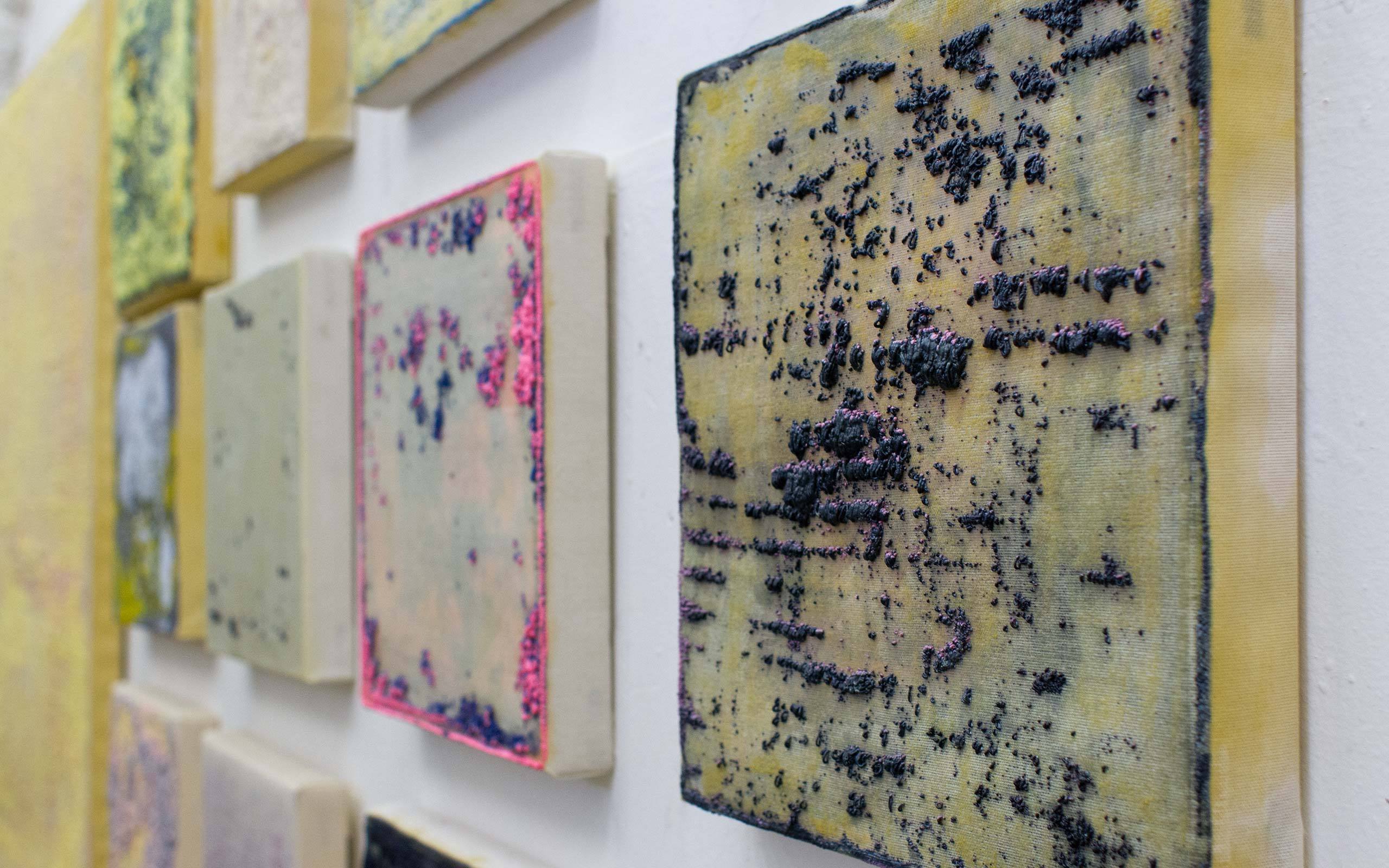
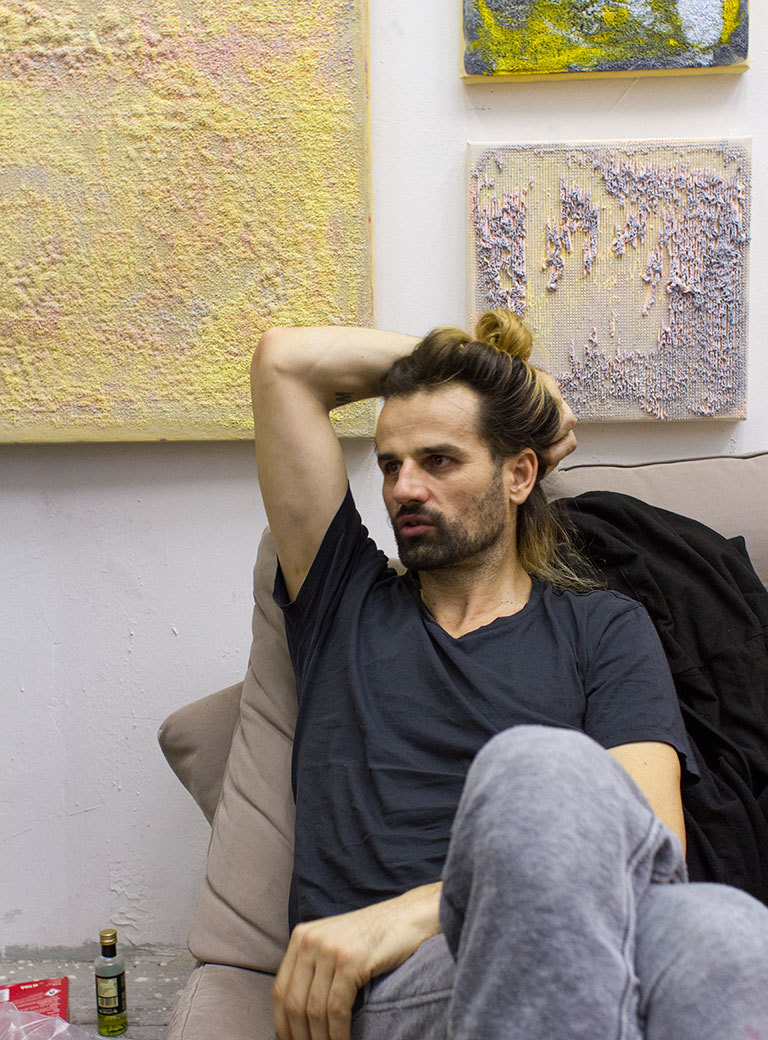
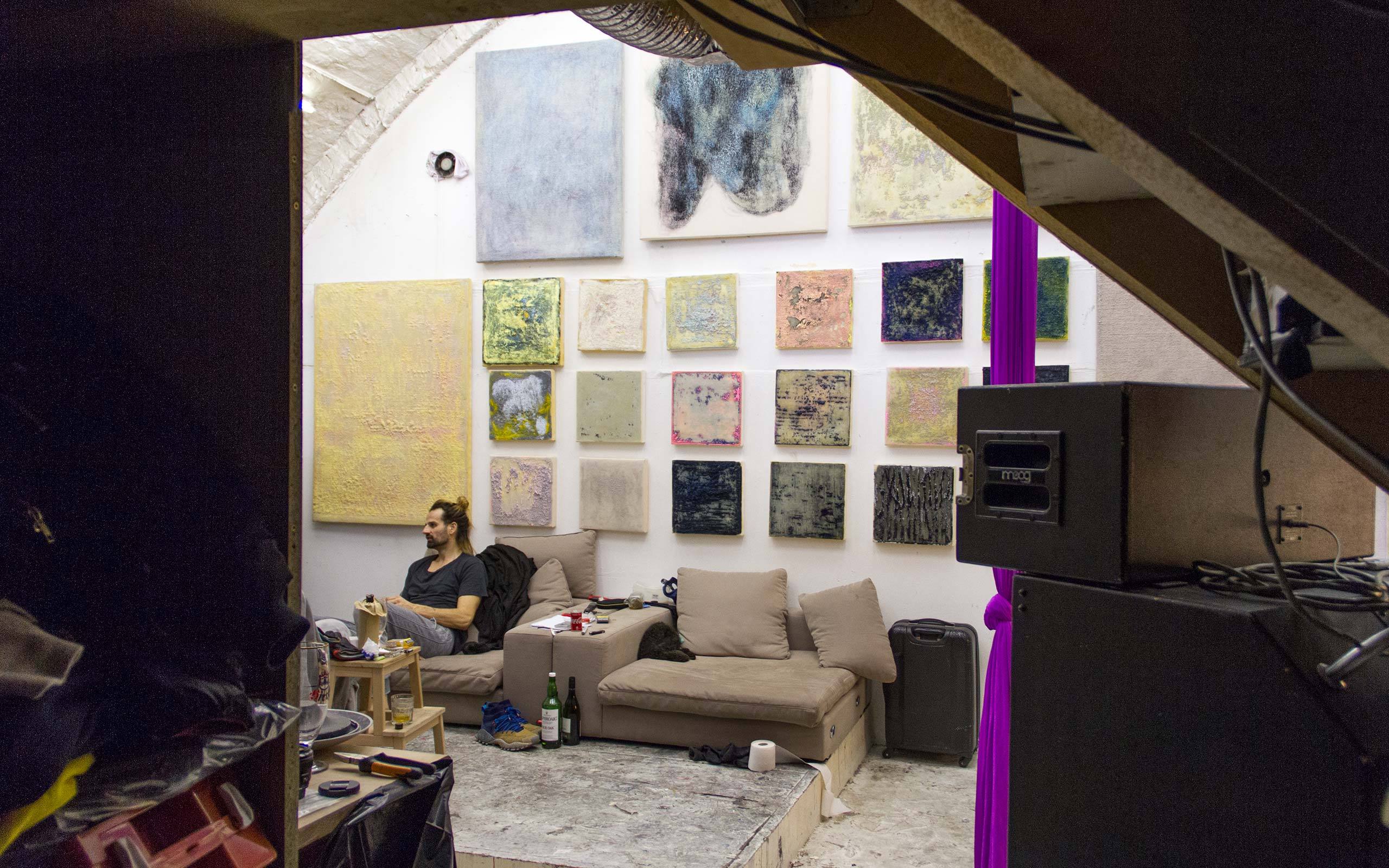
If we disregard the process, what’s the content you try to communicate in your work? The procedure is a large part interwoven with the content of my work. It is about, as I said, an interaction between coincidence and control, about exercising my eye continuously and to find an exciting approach to the history of painting and to painting for myself.
Is there something that you want to activate in the viewer with your works? My works are to impact on an emotional level and to generate tension through the technique. I try to transfer emotions with the materials that I use, to exaggerate and to go to the very limits. Ultimately, one cannot explain the feelings that art elicits. Perhaps my art is only a kind of flat sprinkling. But even that would be justified.
As you said in the beginning, you love to work with oil and canvas. Have your studies with Daniel Richter influenced you in that way? I was actually accepted by Franz Graf and initially made graphic works. But after two semesters Daniel came. That was good, because he encouraged me to question many limitations. His concept is that one should use any material – the brush, the finger, everything that art history has to offer – in order to produce a painting. I think that’s awesome. At the moment I experiment with creating my production process in a way that several pictures result from one action. In this specific case it means that a kind of counter image evolves through the paint that falls through levering out my control even more.
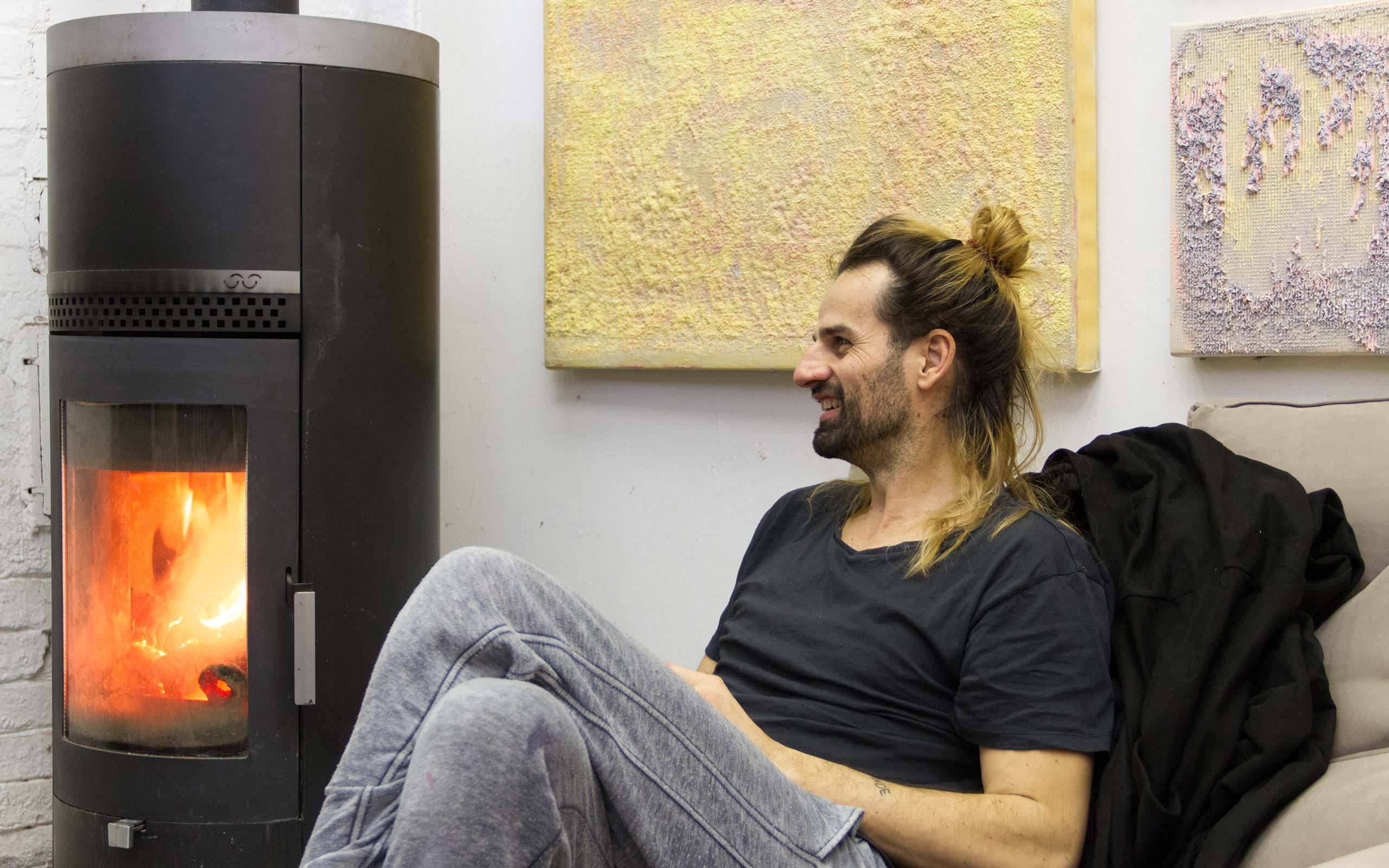
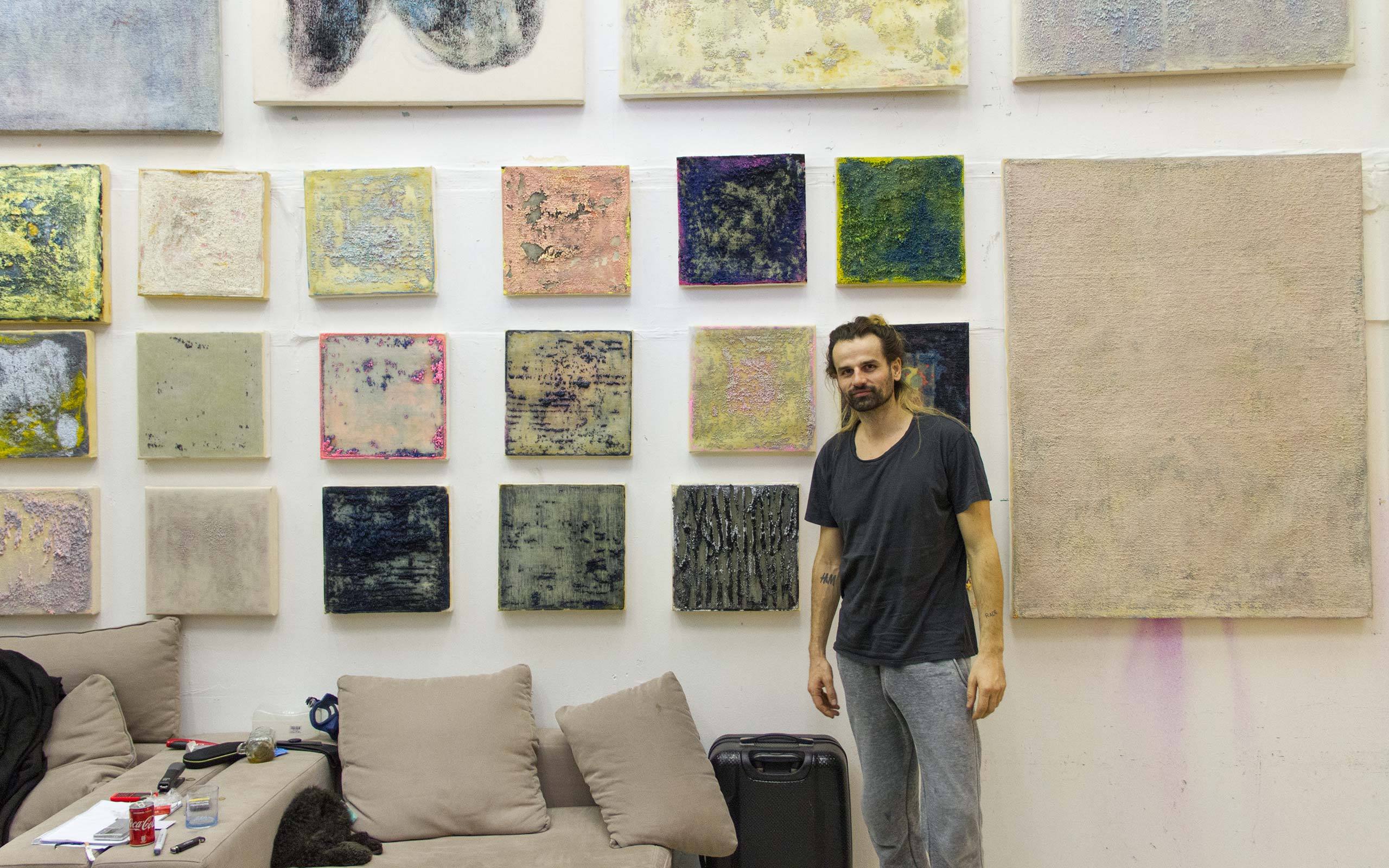
How did you come to study art?
I have a very terrible story. I learned to be a baker, then I was a plumber, and for some time I then worked at any job. (t was only when I reached the age of 28, that I noticed all my friends were doing something creative. I had already done music since was 19, but that was frustrating, because you work on a number for months without seeing results. After I had not achieved anything in seven years in music, I sold my equipment and bought canvases and paint instead. When I applied at the academy I was immediately accepted.
Did you ever have the feeling of being in the wrong place at the academy as a complete lateral entrant?
In the beginning I sat there very aware that everyone spoke French and that I didn’t yet know the language. But after two years, I began to speak this French. Suddenly I could decipher the images and read the codes. But I still feel it is more important where things move than what someone has said at one time. And it is also better to begin one’s studies when one is older, one is calmer and appreciates things differently.
Were the fine arts really new territory for you or did you already have an access to it before your studies?
I remember that in my childhood in Bosnia I loved to draw, because I found school so boring. When I entered secondary school in Austria I copied the German language from the black board until I mastered it. In retrospective this is very interesting: to copy a language because you don’t understand it.
What did your parents say when you told them that you wanted to study art?
The first thing my father said was, “You’re not getting any money from me!” I answered, “Hey, I don’t need your money, don’t you realize I have received a scholarship that provides financial assistance.” On the side I sold self-printed T-shirts all over Europe and so I was able to study. At first my father was very dismissive, but that wasn’t anything new. For example, when I was eighteen and had grown my hair long, he didn’t speak to me for two years. Somehow he was finally able to understand that it wasn’t a simple matter to be accepted at the academy. More recently he has asked me when I will finally bring some money home. (laughs)
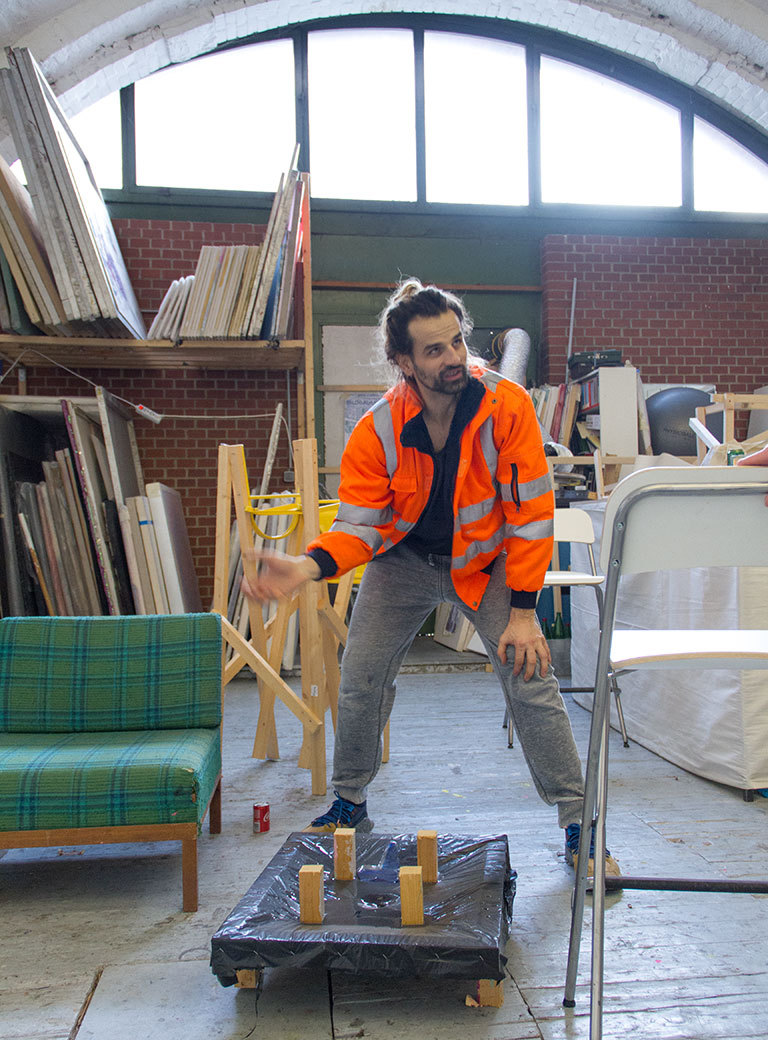
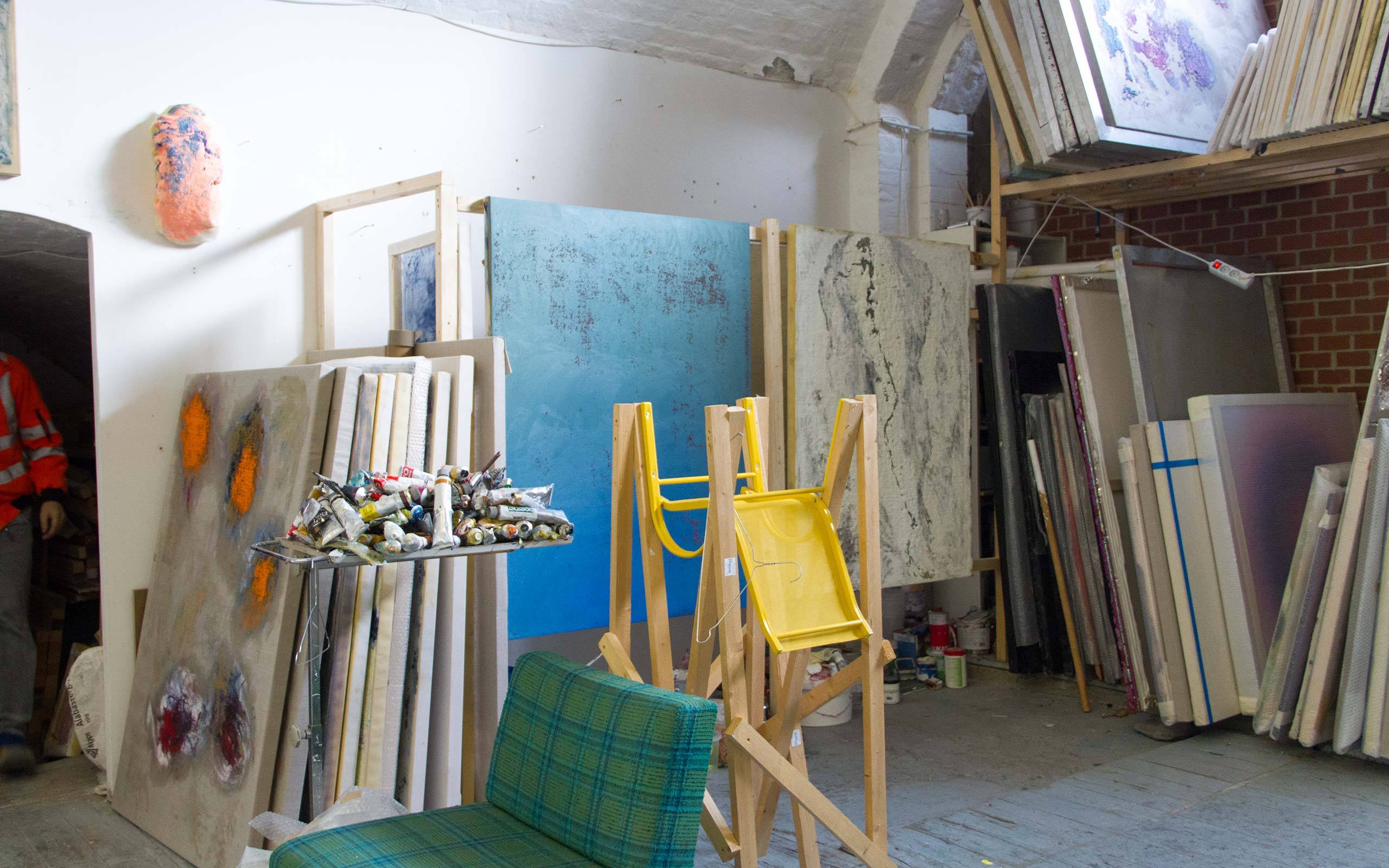
You appear to be someone who is unimpressed by his surroundings. But at the same time artists wish to be able to support themselves with their art and the market demands that work is produced, does that influence you?
I really don’t have a good feeling if I haven’t worked for a while – quite apart from the pressure of the art market. But that is more an inner drive. I should work much more, but not in order to be able to sell more, but because I believe that I can still paint a great number of pictures. There are certainly moments where one does achieve much. But every crisis is good. One has to overcome it.
In the studio your packed suitcase awaits. Tomorrow you fly to Thailand for an extended visit. Most enviable! What are you up to?
For me Thailand is a sacred land! At some point I had lost my sense of spirituality at the academy, but in Thailand’s nature I rediscovered it. For example there are these thermal springs: One sits in the hot hydrogen sulfite infused water, surrounded by trees that are hundreds of years old, above in the sky the milky way. I had never experienced this before. Very different works emerge when I am there. It is surely going to be a productive time.
Finally, can you reveal to us if there is an artist who you would consider an idol?
When I first visited Hamburger Bahnhof in Berlin I saw a painting by Cy Twombly which I stood in front of for half an hour or longer. I couldn’t break away from it. One moment I thought that I could decode and read the painting the next moment it was quite indecipherable. That was the best result for me. I try to achieve something similar with my work and to present it in a way that one can’t break away from.

Interview: Gabriel Roland
Photos: Florian Langhammer


